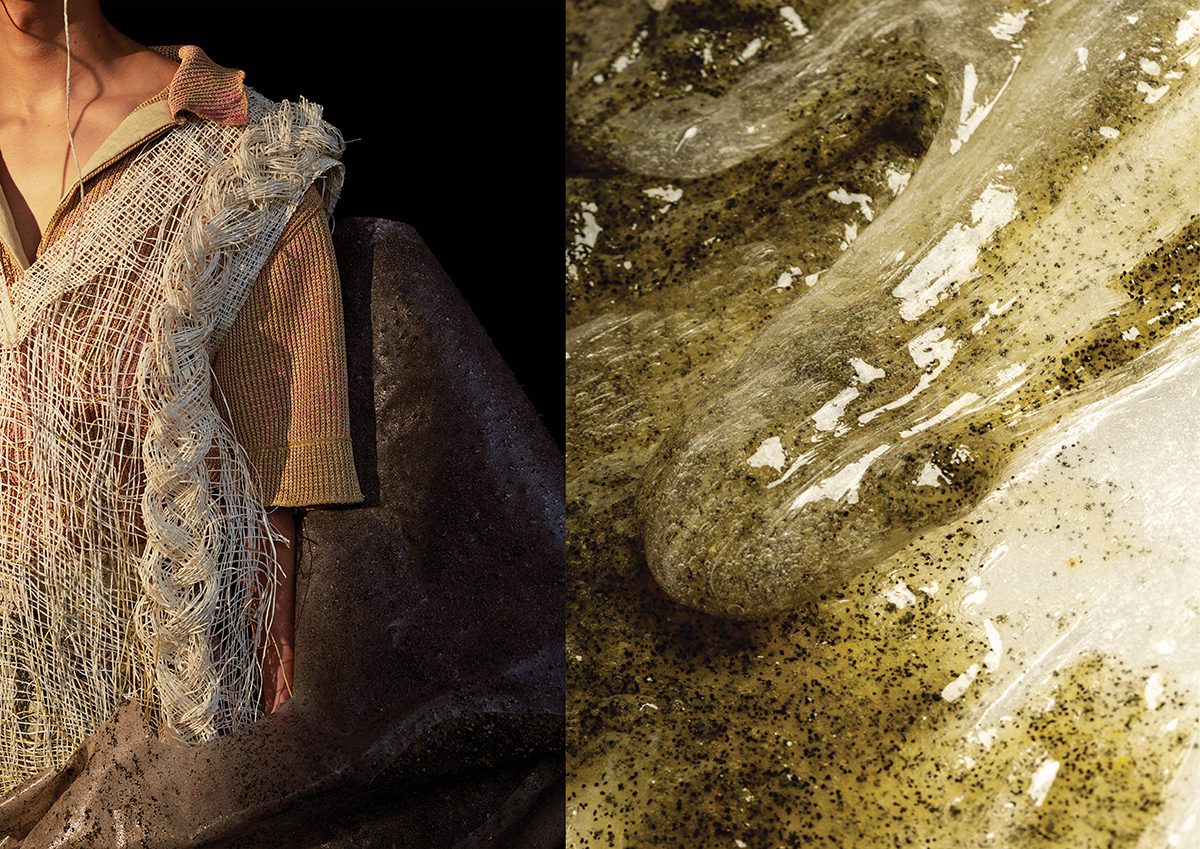What was the most difficult part of turning this collection into a reality? How did you overcome that difficulty?
Samson Leung: Unlike the other designers, I couldn’t just cut and sew garments together or drape with fabric. I have invented a slime material, which I would need time to understand its limitation and strength, whilst trying to understand how to work or create silhouettes with it under a short academic year. So under the pressure of designing, developing and making the collection amongst many other textile and design I was working with, I constantly found various challenges with the slime. A lot of planning was involved, such as estimating how much slime I would need to make for my collection and follow a strict schedule in order to make it for the catwalk show. On a regular day to day basis, I would go to the studio at 8:30 AM to work until 10 PM and carry on working more at home. It took about a week for the slime to dry, hence between February until the end of May I had to stay up very late roughly until 6 AM twice a week to produce slime after I got home from working in the studio in the evening. I even had to build a drying rack at home to accommodate the mass-production of slime!
Do you have a favorite piece from this collection? If yes, what makes that piece your favorite?
Samson Leung: The whole of fourth look, the hand-painted oil paint transfer print shirt, textured granular straight trousers (you can’t see it) and the printed clear slime dungarees. The textiles and slime took a tremendous amount of hours to make, but the shirt was another level of precision. I had to hand paint the colorway separately by the shades (green and yellow, red and brown) and make sure once they overlapped, they matched up to create the print I wanted. Once it was dry, I then transferred print it onto the fabric before cutting and sewing the garment together. The shirt itself looks almost like a Shan Shui painting, there’s something very oriental about it that reflects my culture to my audience.
For your films, why did you decide to film them in Japan and Hong Kong? How long did it take you to produce those films?
Samson Leung: It took about a month from initial planning to the final edits to produce the films. Each of my films almost follows a different “boy” from the place I shot it. They almost interlink the different boys around the world through the emotion (overwhelmed) I was exploring within the narrative. I was living in those places at the time of the shoot, and I figured it would be good to shoot a film at wherever I was, as a memory to myself of the time and state I once used to feel.
What was your favorite part during the filming process?
Samson Leung: The actual shooting process was probably my favorite. It’s when you put all the hours into planning to visualization on set through directing and adjusting through the lenses of the camera. There’s just something magical about that moment where you were connected between the real world and the two-dimensional world within the camera.
What’s the most valuable lesson you got out of producing this collection and your mood films?
Samson Leung: You have to be open for collaboration with others, you can’t do everything alone. You could learn so much from other people’s fields of expertise.
What do you hope to achieve in the next 5-10 years?
Samson Leung: I hope to be recognized and appreciated for my creations.
Flip through the gallery below to browse through the pieces of his collection.
CREDITS
Designer Samson Leung
Photography Simonas Berukstis
Hair and Make-up Kristina Pavlov
Slime Photography Oliver Vanes

